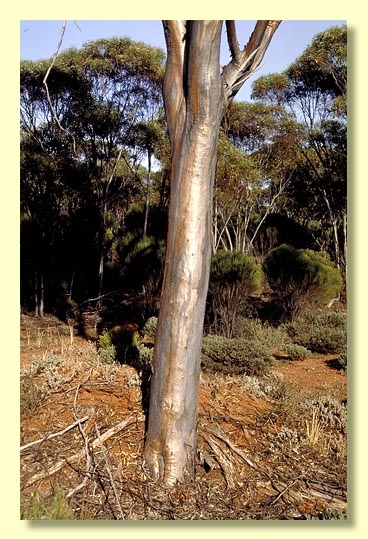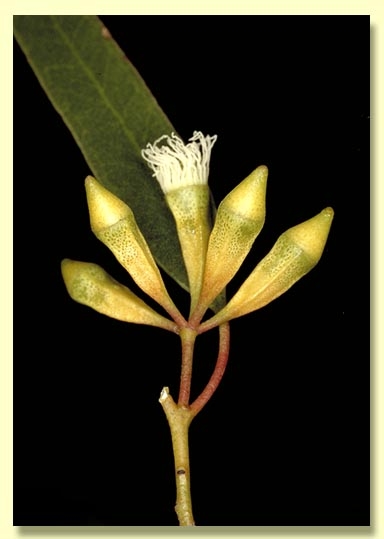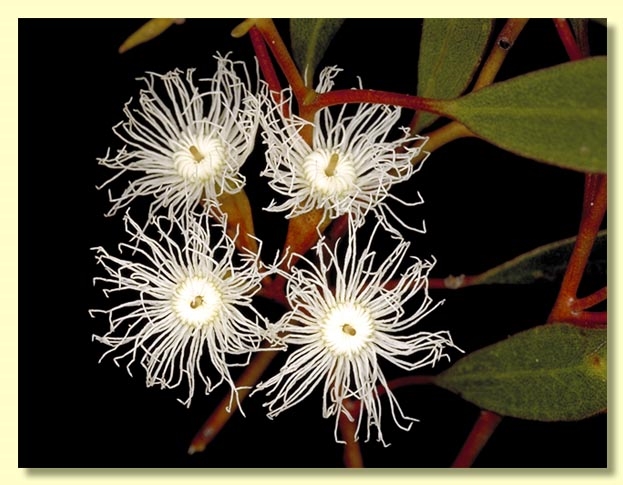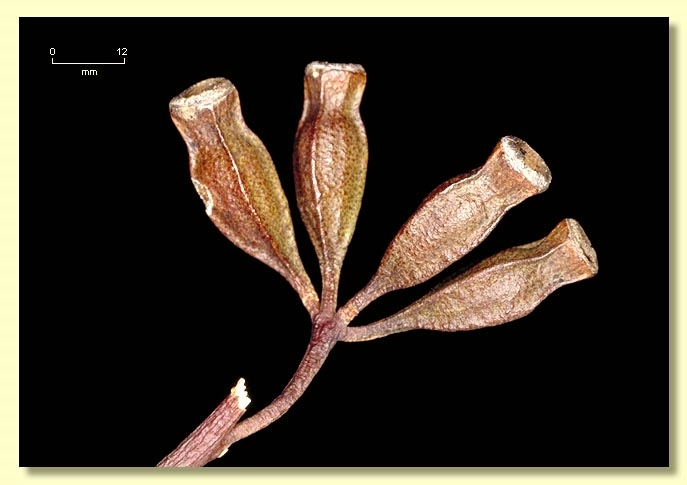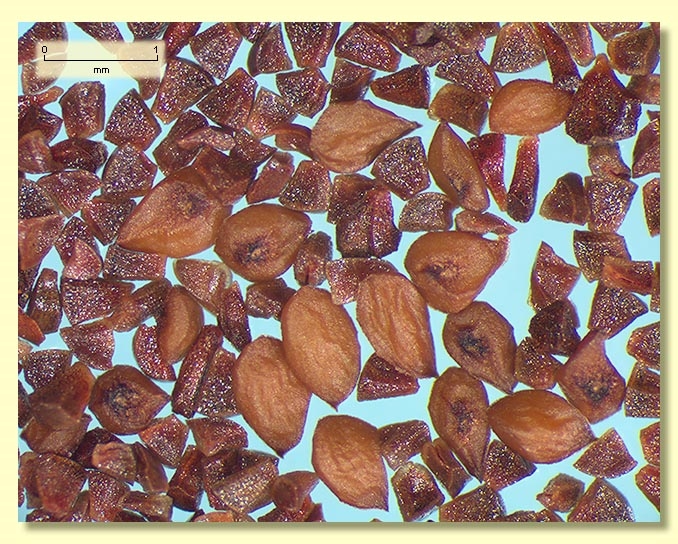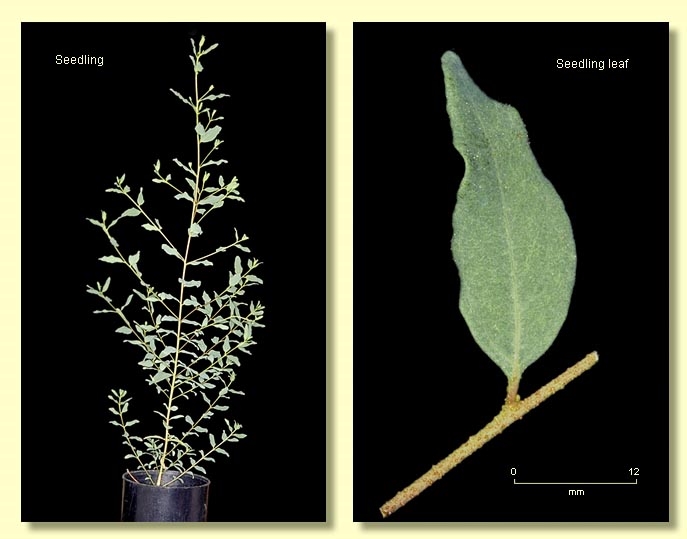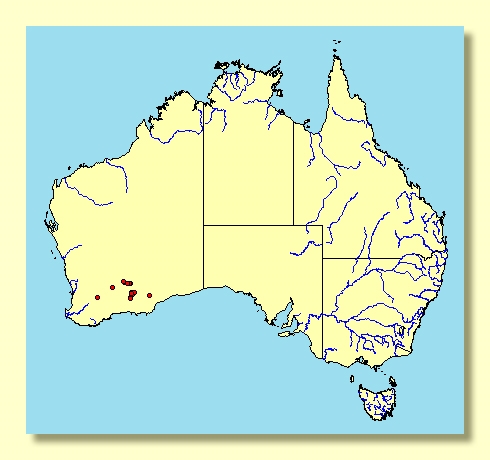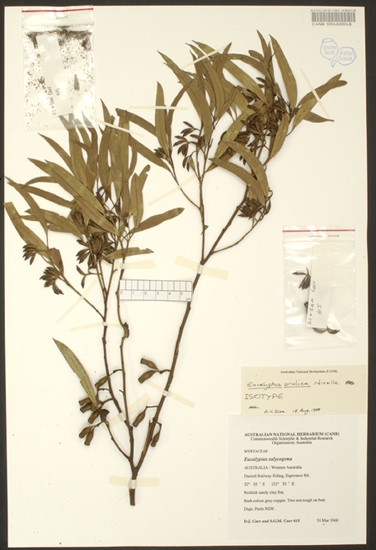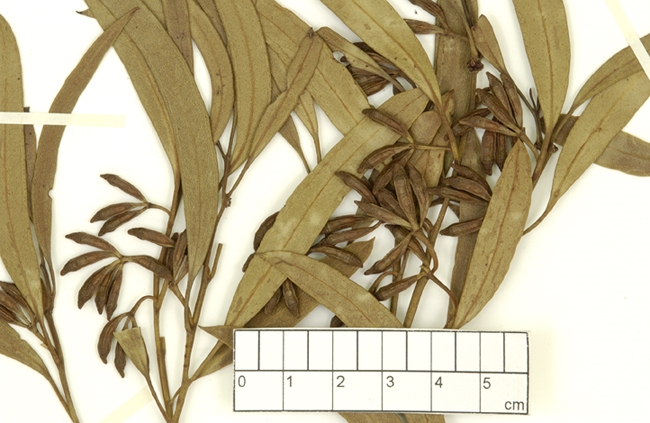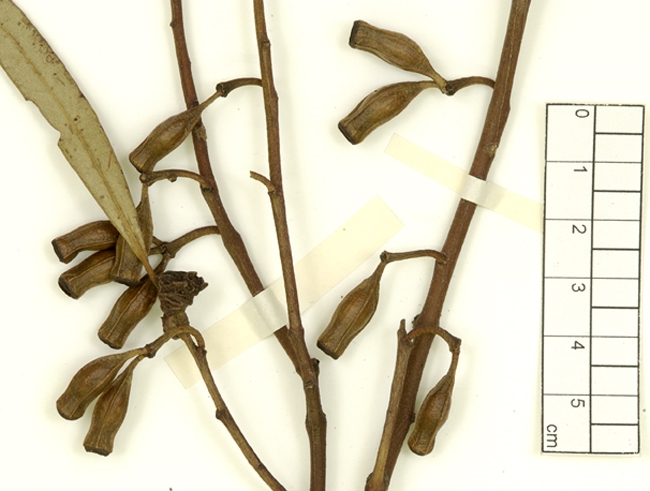Euclid - Online edition
Eucalyptus prolixa
Eucalyptus | Symphyomyrtus | Bisectae | Destitutae | Heterostemones
Bark smooth through, rarely with up to 1 m of thin rough bark at the base of trunk, smooth bark grey-white to dark grey or coppery red.
Branchlets lacking oil glands in the pith.
Juvenile growth (coppice or field seedlings to 50 cm): not seen.
Adult leaves alternate, petioles 0.6–1.8 cm long; blade lanceolate to narrowly so, (5)6–9.5(10.3) cm long, (0.5)0.7–1.4 cm wide, base tapering to petiole, margin entire, apex acute, concolorous, glossy, green, side-veins usually acute, reticulation sparse to moderate, intramarginal vein remote from margin, oil glands large, island.
Inflorescence axillary unbranched, peduncles 0.5–1.1 cm long, buds 7, pedicellate, pedicels 0.3–0.5 cm long. Mature buds oblong in outline, square in cross-section and prominently angled (1.1–1.5 cm long, 0.4–0.5 cm wide), scar present (outer operculum shed early), operculum conical (0.4–0.5 cm long), stamens inflexed, the outer longer and infertile (staminodes), the inner shorter with weakly versatile oblong-reniform anthers basifixed to the tapering filament, dehiscing by subterminal pores, style long and straight, stigma blunt to tapered, locules 3 or 4, the placentae each with 4 vertical rows of ovules. Flowers creamy white.
Fruit erect to spreading, pedicellate, pedicels 0.3–0.6 cm long, narrowly urceolate and square in cross-section, 1–1.5 cm long, 0.4–0.7 cm wide, disc descending vertically, valves 3 or 4, enclosed.
Seeds brown, 1–2 mm long, flattened-ovoid, dorsal surface more or less smooth, hilum ventral.
Cultivated seedlings (measured at node 10): cotyledons Y-shaped (bisected); stems rounded in cross-section, smooth or slightly warty; leaves shortly petiolate, opposite for 4 or 6 nodes then alternate, ovate to lanceolate, 2–3.5 cm long, 0.7–1.5 cm wide, dull, green.
Flowering has been recorded in July, September, October, November and December.
Mallet endemic to Western Australia, found east from Kondinin to Coolgardie, Norseman and north of Salmon Gums, on clay loam soils. Smooth-barked with very upright side branches, green glossy crown and squared buds and fruit.
Eucalyptus prolixa belongs in Eucalyptus subgenus Symphyomyrtus section Bisectae subsection Destitutae because buds have two opercula, cotyledons are Y-shaped and branchlets lack oil glands in the pith. Within this subsection E. prolixa is one of seven closely related species that form series Heterostemones. This series is characterised by the infertile outer stamens that are conspicuously twisted and spreading in flower and the much shorter fertile inner stamens that are held more erect. This group of species also has narrow fruit with a descending disc and enclosed valves while the leaves have side-veins quite acute at the base of the lamina and usually sparse reticulation.
Eucalyptus prolixa, E. quadrans and E calycogona have buds and fruit square in cross-section and differ from E. gracilis, E. yilgarnensis and E. brevipes, which have buds and fruit rounded in cross-section. E. celastroides has slightly angled buds but generally rounded fruit.
E. prolixa has longer, narrower buds and fruit than any of the four subspecies of E. calycogona. E. quadrans has shorter, cupular fruit angled at the base or more or less square in cross-section. Both E. quadrans and E calycogona are lignotuberous mallees whereas E. prolixa is a non-lignotuberous tree (mallet).


